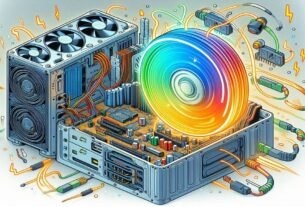— What Are Threads, Processes, and Parallel Programming?
Life is hard. You’re trying to make coffee while also not burning the toast. Well, computers have similar struggles. They need to play music, run antivirus scans, and load your 47th cat video tab — all at once.
So how do they manage this?
The answer lies in our behind-the-scenes digital heroes: Threads and Processes. Let’s dive into their world (but grab your coffee first ☕).
🧠 What Is a Process? — “Different Homes, Separate Lives”
A process is an independent program instance running on your computer. It has its own memory, resources, and little universe.
💡 For example:
- Spotify is a separate process,
- Google Chrome is another process,
- Word runs as yet another.
They’re like neighbors living in different apartments. One can throw a party, and the others can still enjoy their naps.
🧵 What Is a Thread? — “Roommates Sharing the Same House”
A thread is a smaller unit of work inside a process. Threads share the same memory and resources but perform different tasks independently.
💡 For example:
If you’re watching YouTube in one Chrome tab and reading an article in another — those tabs could be different threads. They live in the same process but handle their own business.
⚠️ The catch: if one of them crashes, they all might go down with it. Like one roommate leaving the stove on and setting off the fire alarm for the whole apartment.
🤹 What Is Parallel Programming? — “The Multitasking Show”
Parallel programming allows multiple processes or threads to run at the same time.
This is how your CPU can play music, update Windows, and run your game simultaneously.
But wait… does it really run them at the same time?
Not always. The CPU just switches between them so fast that it feels like it’s doing everything simultaneously. (It’s not the Matrix, but it’s close.)
🧨 Why Does Everything Crash Sometimes?
Threads are awesome — until they aren’t. Common problems include:
- Shared resource conflicts: Everyone fighting over the same RAM spot — chaos.
- Deadlocks: Two threads waiting on each other… forever.
- Race conditions: Threads access data in the wrong order — results make zero sense.
Like someone saying “toast is ready!” before plugging in the toaster.
🛠️ How to Use Threads Properly
— So You Don’t Say “I Started a Thread and It Never Came Back…”
✅ 1. Write Thread-Safe Code
If threads share data, use mutex, lock, or semaphore to avoid fights.
💡 Python: threading.Lock() | Java: synchronized
✅ 2. Don’t Spawn a Million Threads
Too many threads = your CPU spends more time managing them than actually working.
It’s like hosting a party where you keep answering the door but never enjoy the party.
✅ 3. Use Thread Pools
Don’t create new threads for every task — use a pool of reusable ones.
💡 Python: ThreadPoolExecutor | Java: Executors.newFixedThreadPool()
✅ 4. Don’t Overload the Main Thread
In GUI applications, avoid doing heavy lifting on the main thread — or your app will freeze faster than a Windows update in public Wi-Fi.
💡 Use:
Coroutinein Androidasync/awaitin JavaScriptTask.Run()in C#
✅ 5. Don’t Forget to Clean Up
Threads aren’t boomerangs — they don’t always return. Use join() to wait, and cancel() when needed.
Zombie threads are real — and RAM-hungry.
🧪 Helpful Tools for Debugging and Monitoring Threads
| 🛠️ Tool | What It Does |
|---|---|
| VisualVM | Monitors threads in Java apps. |
| Py-Spy | Lightweight profiler for Python threads. |
| Valgrind / Helgrind | Finds memory & threading issues in C/C++. |
| Intel VTune Profiler | Analyzes multi-core performance. |
| Concurrency Visualizer | Visual Studio tool for .NET thread analysis. |
🎯 BONUS: Recommended Libraries & Frameworks
- OpenMP (C/C++) – Easy parallel loops
- Go Routines (Go) – Lightweight thread-like structures
- asyncio (Python) – Async magic
- Intel TBB – Modern C++ parallel framework
- RxJava / RxJS – Reactive programming for the data flow folks
🎬 Final Thoughts: Don’t Burn the Toast or the Thread
Threads, when used well, unlock the true power of your machine. When used badly, they turn your PC into a screaming jet engine.
✅ Parallelism = Speed
✅ Controlled threads = Happy code
❌ Bad synchronization = Endless debugging nightmares
Coding is an art. Managing threads is engineering.
💬 Have your own horror stories about thread madness? Or questions like “Why does my CPU sound like a plane?” Share in the comments — let’s debug life together!




